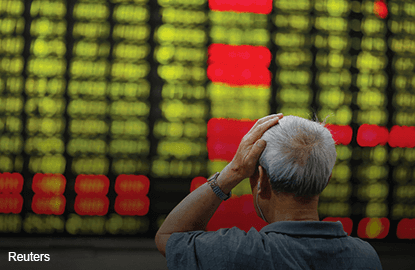
This article first appeared in The Edge Financial Daily, on January 5, 2016.
KUALA LUMPUR: Malaysia saw a net withdrawal of foreign funds from equities listed on Bursa Malaysia that amounted to RM19.5 billion in 2015, which is equivalent to US$5 billion, based on net transactions in the open market.
“The US$5 billion outflow was the highest among the seven Asian markets (Malaysia, India, Indonesia, Thailand, the Philippines, Taiwan and Korea) that we track. It was also the most severe foreign attrition since the 2007/08 financial crisis,” said MIDF Research head Zulkifli Hamzah in his weekly fund flow report yesterday.
“Foreign funds sold Malaysian equity from the opening day of 2015. The selling was pervasive, such that Bursa reported net foreign injection in only 15 out of 52 weeks of trading during the year,” he said.
Zulkifli said foreign funds sold for 20 consecutive weeks during the May to September period, and was “one of the longest sustained stretch of foreign attrition since the 1997-98 Asian financial crisis”.
He said the most unnerving period was the back-to-back trading week ended Aug 14 and Aug 21, when the withdrawal amounted to RM1.42 billion and RM1.35 billion net, respectively.
Zulkifli said that in October, foreign funds made a promising return, which coincided with the ringgit regaining some lost ground.
“However, developments at the global level was against the local bourse, and the buying in October proved to be fleeting.

“In the last trading week of 2015, foreign funds surprisingly bought a significant RM546.2 million net, in the open market, reversing four successive weeks of attrition.”
That translated into a deficit of RM1.19 billion for the month of December, which could have been worse in view that it was the pivotal month during which the US Federal Reserve raised interest rates for the first time in almost a decade, he said.
“After the heavy attrition from Bursa in 2015, we estimate that the overhang of foreign liquidity for funds that had entered the local market since January 2010 to be only in the region of RM8 billion to RM9 billion,” he said.
“The fact remains that foreign shareholding on Bursa was relatively thin and is currently the lowest since the financial crisis. The downside risk as a result of foreign dumping is therefore rather limited,” he added.
Regionally, Zulkifli said global equity markets ended 2015 on a cautious note in seasonally thin trading.
He said that for the week, the FBM KLCI topped the leader board with a gain of 1.74% to end 2015 with the index at 1,692.51 points.
He explained that the FBM KLCI recorded positive gains in the last three weeks, which is a good omen for the local bourse.
“Elsewhere in Asia, most markets moved sideways last week," he said.
“Wall Street ended 2015 on a weak note as prices fell significantly last Thursday. December was an uncharacteristically volatile month for the Dow Jones and S&P 500," he noted.
Zulkifli also noted that for 2015, the best performer in terms of US dollar was Japan’s Nikkei 225, which rose 8.46%.
“The KLCI fell a whopping -21.56% in US dollar terms, but was pipped to the last spot by Thailand’s SET, which lost -21.6%,” he added.